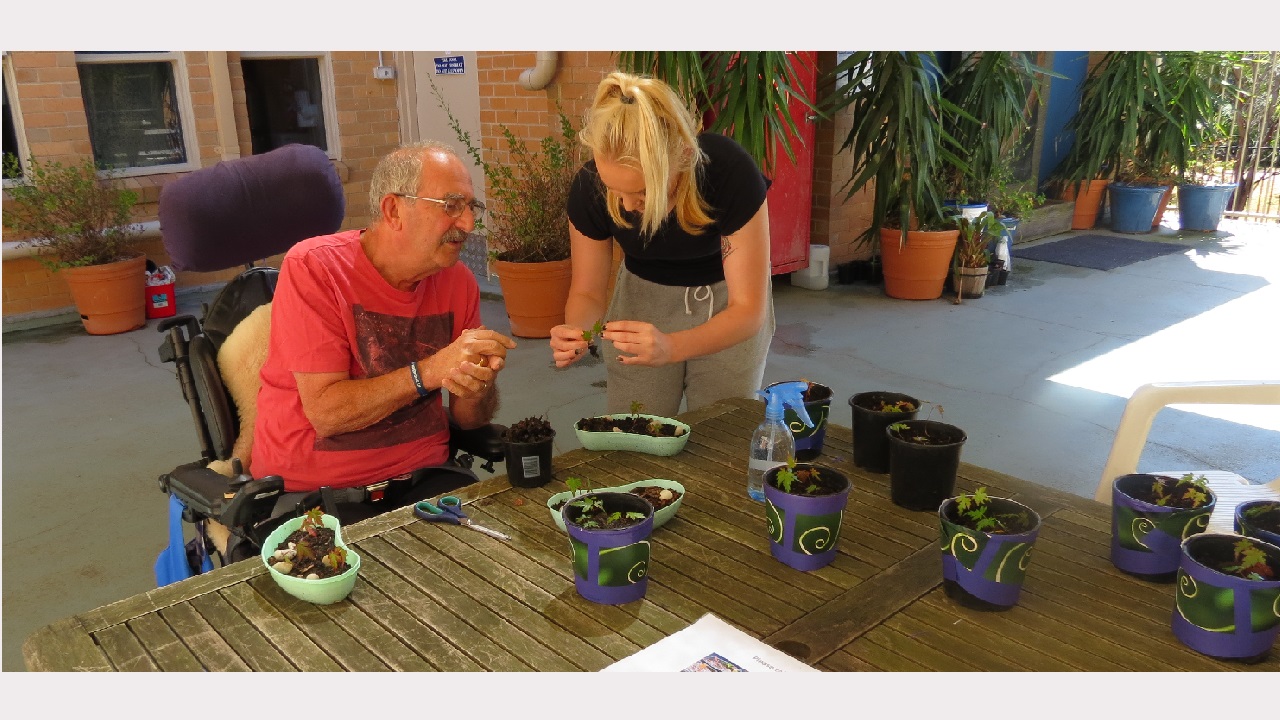From little things, big things grow; how moving stories sprouted from salvaged seedlings
From little things, big things grow; how moving stories sprouted from salvaged seedlings
by Heather Wiseman
Thursday, February 16, 2017
An inspired effort to save tree seedlings gives palliative care patients a sense of purpose while in hospital.
There was a young patient who had been playing on Mary Hocking’s mind for weeks. The health promotion officer at Calvary Health Care Bethlehem was troubled by how frustrated the patient was feeling with being cooped up in hospital and unable to go home.
“Everyone on the ward was offering everything they could to try and make this time as okay as possible for the patient and the family,” says Ms Hocking, who also works as a palliative care physiotherapist.
“It was quite an overwhelming concern of what else can we offer or do.”
Distracted by this dilemma as she drove to work, Ms Hocking found herself parking in the hospital car park. Asking herself why she didn’t park in her usual space, she nearly stepped on a cluster of seedlings.
“So that was my answer,” she says, convinced that stumbling upon the tiny Japanese Maples was fortuitous.
“I thought, ‘We have to save these; I wonder if we can give patients something to do and work towards and pass on’.”
Within a few hours Ms Hocking had enthused staff and found a local gardening business prepared to donate pots. The hundreds of seedlings were roped off “like a crime scene” with a red-tape barrier and staff were emailed with a warning not to tread on them.
Ms Hocking, Day Centre coordinator Tracy Neave, and a volunteer potted 101 seedlings and placed them on a stand in the hospital courtyard. Interested patients were then encouraged to water them.
“It was a mix of people with progressive neurological diseases and palliative patients. We didn’t exclude anyone who wanted to help out.”
What evolved became known as the Maple Key to Wellbeing Project. Not only did it result in many maples being given away and replanted around Melbourne and rural Victoria, it also inspired moving stories and meaningful interactions which the hospital plans to document.
Ms Hocking says while the project was small and spontaneous, for some patients it had a big impact.
“Being in a hospital environment is so challenging to our sense of person, our sense of worth, our sense of what we have to offer,” she says.
She was moved to see one patient rekindle his interest in creating bonsais and share his knowledge with his room-mate.
“He said, ‘If you give me some hospital kidney dishes I will show you how to do it’. So they had this impromptu bonsai lesson.”
The patient was not mobile enough to manage a hose and commented that he needed a misting bottle.
“I held two bottles behind my back and then presented them to him. He beamed. He had given up bonsai because of his physical limitations, but with staff support he could still do it.
“On the day he was going home, I said ‘Do you mind posing for a photo of handing over the spray bottle to someone else, just as a gesture, because I’m a bit corny in that way?.”
The patient agreed, passing the bottle to a young volunteer.
“He gave her this half-hour lesson on how to replant a bonsai. It was just wonderful for him to pass this knowledge on; you could tell he was so happy to do it.”
When Ms Hocking asked another patient whether he would like to take some seedlings home with him, he declined, saying he didn’t think he would be able to care for them. Sensing that he may not live long enough to care for them, she asked whether he knew someone who might like to plant them on his behalf. His eyes lit up. He took five; one for each of his grandchildren.
“For some patients it gave a sense of purpose, occupation and meaning. It is a positive gesture to look after something that is growing.
“It is a hopeful gesture, especially if you nurture something and you are able to give that to a grandchild when you are so limited in what you can do. The fact that you have helped to create this or sustain this life, I think that is really powerful, especially when you are battling to sustain your own life.”
Ms Hocking says the hospital was collecting stories about people who were affected by the project, though it was unclear just how many patients and families it had touched.
“It’s about the depth of effect you have on any one person. That is the key. Then that person has the potential to affect others similarly, like a ripple effect.
“It wasn’t a huge project. It was little, but it was lovely.”
Ms Hocking is presenting details of the program at next week’s Compassionate Communities Symposium in Sydney. Join the conversation on Twitter: #ComCom17
